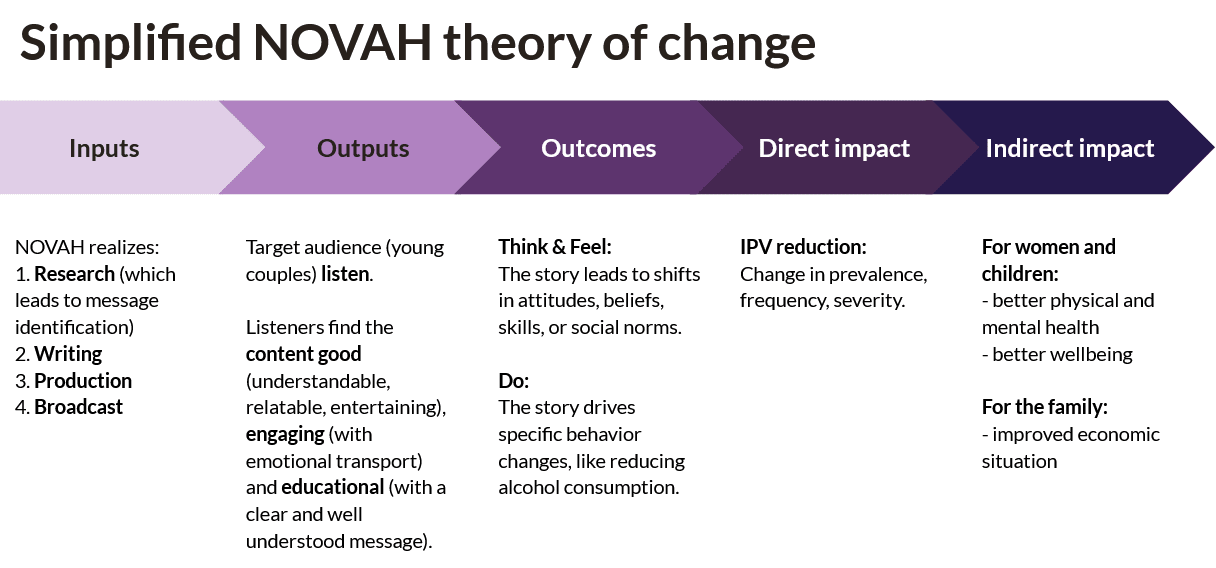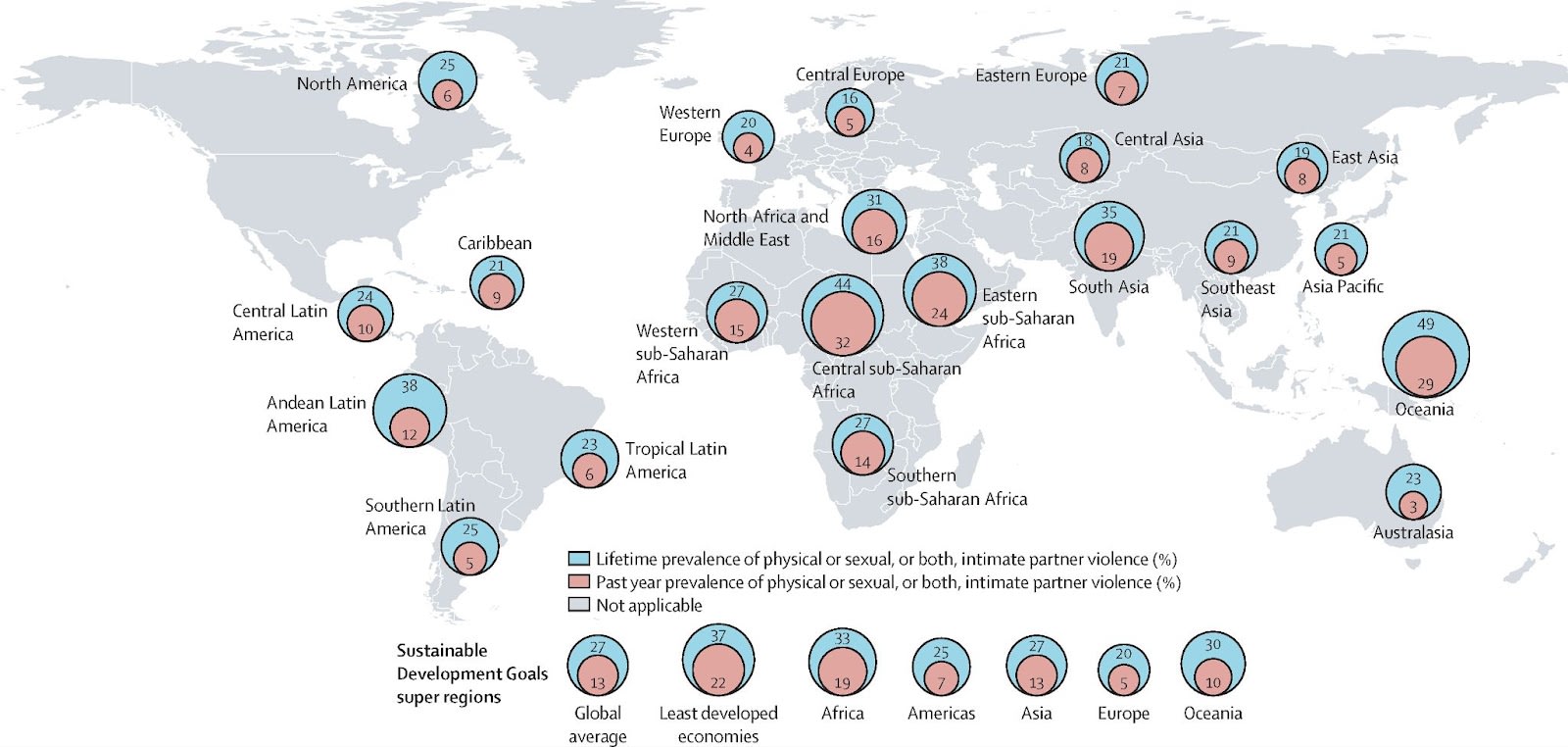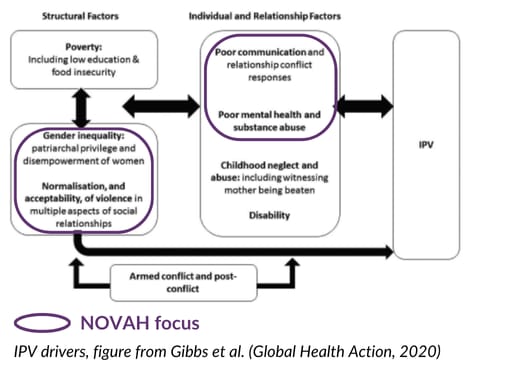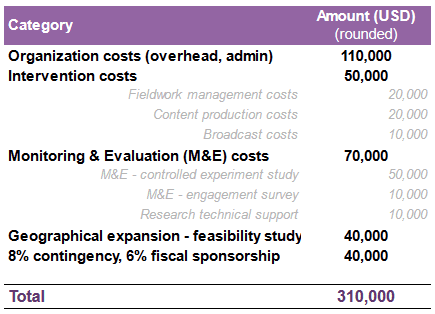Summary
- In this post we present NOVAH (No Violence At Home), an AIM-incubated charity dedicated to preventing intimate partner violence using mass-media. NOVAH broadcasts radio dramas to change attitudes and behaviors. Entertainment-education has indeed been deemed very promising by recent academic research and was recommended by several organizations for its potential cost-effectiveness (projected at scale: 8x cash transfers for NOVAH).
- NOVAH produced its first radio show in Rwanda this year. In 2025, we will produce our second dramatized radio show and test the effectiveness in a rigorous quantitative study with 500 couples. Marginal funding would be used for our 2025 budget, estimated at $310,000. We see donations from individuals particularly important to bridge the gap until we have a better established track record and next year secure more traditional funding.
Introducing NOVAH
NOVAH (short for No Violence At Home) is a charity dedicated to preventing intimate partner violence - domestic violence between partners - using mass media.
NOVAH was founded during the Spring 2024 AIM/Charity Entrepreneurship program, by Ivy van Regteren Altena (experience in behavior change communication) and Alexis Atlani (experience in monitoring and evaluation), authors of this post.
In Summer 2024, NOVAH started operations in Rwanda. The country was selected mainly for high violence prevalence and very high radio listenership; using a weighting factors model, expert interviews and scoping visits in May 2024.
Our main vision is (i) to rigorously measure and, if validated, demonstrate cost-effectiveness, and (ii) to develop a scalable model and methodology that can be easily adapted by other non-profits across diverse countries and cultural contexts..
Intimate partner violence prevention as a cause
To our knowledge, NOVAH is the first EA/ EA-aligned charity working on intimate partner violence (IPV). IPV is
- A large problem: one in four ever-partnered women has ever been affected (one in three in Rwanda), with around 230 million women suffering annually. According to IHME, the annual direct health burden is 7 million DALYs. Main drivers of DALYs loss include violence, AIDS and depression, which usually makes IPV reduction an impact opportunity for people interested in mental health improvement[1]. Indirect impacts are also significant according to consensus, but quantifying them globally has been harder. Indirect impacts on children include (i) higher risk of being a perpetrator/ a victim later in life (ii) higher risk of health issues in the short and in the long term. Indirect impact on the family includes economic loss.
- Tractable: Drivers are complex but are now better understood. Several prevention interventions have been proven effective.
- Neglected: IPV prevention is underfunded and receives only 0.2% of total aid. This may explain why progress in reducing IPV is slow, with a mere 0.2% annual decline in low and middle-income countries.
Map of 2018 lifetime versus past year prevalence of physical or sexual, or both, intimate partner violence among ever-partnered women aged 15–49 years by Sustainable Development Goals super region. Extracted from Sardinha et al. (The Lancet, 2020).
Mass-media edutainment on the radio as an intervention
- Prevention is much cheaper than response and thus is considered a more impactful option, even though depending on one’s moral framework both options can be considered at the same time.
- Successful mass-media interventions are deemed particularly cost-effective. This is the case of Family Empowerment Media or Development Media International for example.
We selected radio as a media as the reach is the largest in low-income countries, and production costs are low. In Rwanda for example, most of the population neither owns a TV or a smartphone, making radio the most accessible.
At NOVAH, we produce and broadcast edutainment:
- Edutainment, or entertainment-education, is a powerful content approach that strategically weaves educational messages into entertaining formats, like dramas. It is effective because it makes content engaging and relatable.
- Recent academic research shows that edutainment to prevent IPV is very promising. Peterman (2024) reviews all rigorous edutainment studies and identifies that 60% of them demonstrate positive behavior change. For example, Green et al. (2020) demonstrated in rural Uganda a 25% relative reduction in IPV prevalence after three short edutainment films, after just six months.
- This innovative intervention has been recommended by EA and EA-aligned organizations as well as experts in the field: Innovations for Poverty Action (describing it as a ‘best bet’), Founders Pledge, the Global Innovation Fund, the Prevention Collaborative.

Past and current progress
Since May 2024, we have realized:
- Scoping visits, extensive desk research and experts interviews on the intervention design;
- Formative research with 50+ individuals and calls with experts to craft first messaging;
- The production of three standalone stories (60 min of content), which we subsequently A/B tested, allowing us to generate valuable qualitative insights from 50 target listeners;
- (in progress) Production of a full radio drama of six 15-min episodes, that will be qualitatively evaluated with focus groups and pre-post interviews in January and broadcasted to 100,000+ listeners on a regional radio station in February. A medium-size survey will measure actual engagement.
2025 plans
For our second year starting in April 2025, we plan to:
- Develop a longer and improved radio drama (10 episodes of 15 minutes), using insights from our first year, following an iterative process.
- Conduct a rigorous quantitative study on intervention outcomes, with pre- and post- measures and a control group, with 500+ couples. We will measure (i) change in attitudes, beliefs, knowledge and skills (ii) change in behavioral outcomes: mental health, alcohol consumption, power distribution at home.
- Broadcast at scale on two regional radio stations, reaching an estimated 500,000 listeners. By avoiding national coverage, we aim to preserve options for future randomized controlled trials (RCTs). We will also realize a large survey with listeners to assess their engagement and feedback.
- Prepare geographical expansion with a feasibility study in a second country (envisioned: Tanzania).
We estimate the cost of these plans at $310,000. We have applied for grants - for a total of $400k+ - and are waiting for answers, we believe we may receive $80-150k.
Summary 2025 budget. Detailed budget available upon request.
Why donate?
Donating to NOVAH could be counterfactually highly impactful:
- Donations from individuals are particularly important at this stage: As NOVAH is recent and the intervention ‘very promising but not established’, fundraising from traditional, often risk-averse donors, is complex and time consuming for now. Achieving our 2025 goals and completing a quantitative study proving effectiveness will help close this gap and make us more independent from high counterfactual funding. Unrestricted funding is also key at this stage, allowing us to continuously pivot to the path of maximum impact and cost-effectiveness.
- Large potential for cost-effectiveness at scale: during the incubation program, the cost-effectiveness at scale was estimated at 8x cash transfers - this is because with mass-media we can reach one couple experiencing IPV for less than $2.
- Scalability: the intervention is very easy to scale within a given cultural context and relatively easy to replicate in other cultural contexts with a proven methodology.
- Successful feasibility study: For now, we have been delivering what is perceived by experts as high-quality work, on time. This is notably because we are fortunate to collaborate in Rwanda with leading NGOs: RWAMREC (15+ years of experience in IPV prevention, with work acclaimed by top academic studies and replicated in other countries) and Urunana DC (20+ years of experience in edutainment, which produces a show listened to by 25%+ of the population every week).
- Suffering-focused ethical preferences
Why not donate?
Of course, there are several reasons to think donating to NOVAH may not be a good fit for you, in particular if you are risk-averse in your donations preferences:
- Impact uncertainty: the intervention has been evaluated by a few RCTs in one-shot interventions, yet it was a success in “only” 60% of cases. Note: we believe that, because we have the flexibility of a non-profit, we can achieve better outcomes than researchers who are constrained to follow initial plans.
- Early-stage design: there is no consensus among experts on what should be the exact intervention design (e.g. message content, message length, etc.), which leads to more work before impact. Note: This is why we realized A/B testing that early on.
- Uncertainty over cost-effectiveness at scale: No one has ever measured the actual cost-effectiveness of a charity doing this work: our cost-effectiveness at scale is projected and may change when being revised after our first results. Note: We see the lack of data as an opportunity to build the evidence base.
Learn more
Thank you for reading until here! You can find us online:
- Our website, which includes links to donate, to subscribe to our newsletter or to express interest to volunteer.
- Our LinkedIn page to follow us.
- You can reach out to us at ivy@novah.ngo and alexis@novah.ngo.
- ^
Note: Actually, IHME determined in 2021 that IPV is responsible for almost 10% of all DALYs lost due to major depressive disorder. We believe it goes further as consequences on mental health extend beyond depression. We have been recommended by the Flourishing Minds Fund to a donor for a grant for this reason, and we thank them for their support.







Thanks for sharing this, interesting idea. Could you share some more details about what "strategically weaves educational messages into entertaining formats, like dramas" means in practice? Do you have an example plotline - maybe the radio show features some domestic violence and then the perpetrator gets condemned?
Thank you for your comment! Edutainment takes many forms, and our approach centers on storytelling that includes positive and negative role models, along with a transitional character. This character might start with harmful behaviors, such as a man who initially uses violence against his wife but gradually changes due to significant events or advice from positive influences within the story. We take inspiration from this academic study by Green, which showed three short video's in Uganda. You can view one of the video's here.